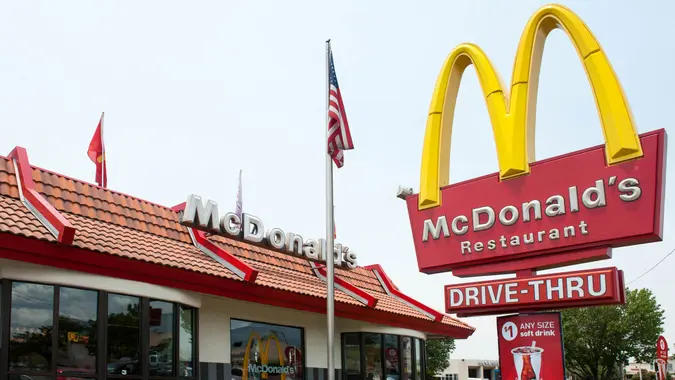Trump’s 2026 Budget Won’t Lower Your Social Security Payment — But 2 Ways It Could Make Your Budget Tighter

Commitment to Our Readers
GOBankingRates' editorial team is committed to bringing you unbiased reviews and information. We use data-driven methodologies to evaluate financial products and services - our reviews and ratings are not influenced by advertisers. You can read more about our editorial guidelines and our products and services review methodology.

20 Years
Helping You Live Richer

Reviewed
by Experts

Trusted by
Millions of Readers
President Donald Trump recently unveiled his 2026 budget, which proposed slashing $163 billion for the fiscal year, The New York Times reported. While the good news is your Social Security payments won’t be lowered, there are other ways the president’s budget plan could cost you.
The budget proposes cuts in several areas, including many state and international programs, environmental protections, housing and urban development, education and more.
Here are two ways that it could affect your wallet, according to experts.
Bigger Food Bill for Seniors
The Commodity Supplemental Food Program was created in 1969 to help women, infants and children up to the age of six gain access to nutritious food. It was later expanded to supply low-income folks who are aged 60 and older with healthy foods, per the U.S. Department of Agriculture.
Under Trump’s budget plan, the program would experience a significant reduction in funding, and seniors would no longer receive the supplement foods to boost their diets.
Instead recipients would receive “MAHA food boxes,” which stands for Make America Healthy Again, per Health and Human Services Secretary Robert F. Kennedy Jr.’s promise to get the U.S. back on track healthwise, CBS News reported.
No further details have been disclosed, but finance experts have expressed concern.
“That program helped older Americans get basic groceries through food banks,” said Danny Ray, founder of PinnacleQuote. “Replacing it with pre-packed boxes may sound efficient, but for many, it means less flexibility, fewer choices and, in some rural areas, potentially no access at all.”
It also means seniors could receive less support, which means money out of their pockets.
According to finance expert Andrew Lokenauth, the commodity boxes instead of food assistance programs will “typically lead to about 15%-20% less actual food value reaching families.”
He explained, “That’s roughly $50-$75 less in monthly food assistance per household.”
Higher Utilities
Another area Trump wants to scale back is the Department of Energy. E&E News by Politico reported the president wants to slash $15 billion from the budget, which is problematic for several reasons.
“The proposal claws back clean-energy funding meant to reduce long-term utility costs, things like battery storage, energy efficiency and electric vehicle infrastructure,” Ray explained. “That could leave consumers paying more for gas and electricity, especially as fossil fuel markets stay volatile.”
He added, “In fact, when the Department of Energy loses billions in support for innovation, it slows down progress that could’ve made everyday costs, like heating your home or commuting, cheaper in the future.”
As a result of this cut, the middle-class could experience a bigger financial strain.
According to Lokenauth, “Energy prices could climb as renewable programs get cut. I’ve calculated that the average household might need to budget $200-$300 more per month between higher utilities and reduced services.”
Personal Budget Impacts
With the turbulent economy and inflated prices, budgets are already tight and now Americans could face greater hardships.
“Overall, while Social Security remains untouched, nondefense domestic spending is getting slashed to record lows, and that means fewer programs and safety nets that help real Americans stay afloat,” Ray said. “So, even if your income stays steady, the support systems around you might not, and that adds pressure to every dollar you spend.”
The domestic cuts are deeper than they have been in decades, and that could mean higher taxes, according to Lokenauth, who agreed that more financially difficult times are likely to come.
“My projections show this’d force many state and local governments to either raise taxes or cut services to fill gaps,” he said. “Either way, it’s money outta your pocket.”
Editor’s note on political coverage: GOBankingRates is nonpartisan and strives to cover all aspects of the economy objectively and present balanced reports on politically focused finance stories. You can find more coverage of this topic on GOBankingRates.com.
 Written by
Written by  Edited by
Edited by 

























